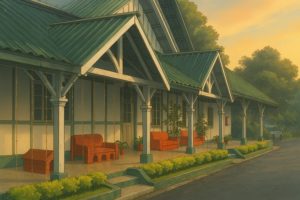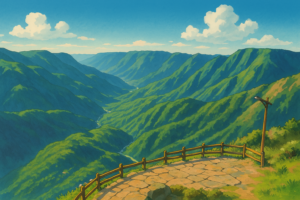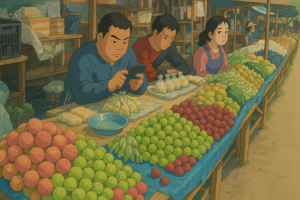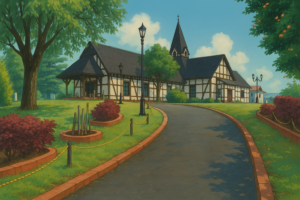 As the world of social media wakes up to becoming ‘Ghiblified’, Esha Chaudhuri studies this new trend in its Shillong chapter.
As the world of social media wakes up to becoming ‘Ghiblified’, Esha Chaudhuri studies this new trend in its Shillong chapter.
All of social media is now flooded with anime converted photographs in the list of trending news. The Ghibli-style illustration has existed since the 1980s and anime fans have known about it for ages. The question beckons how has it emerged as a rage overnight with millions riding the wave? Sunday Shillong examines this widely discussed social media phenomenon with regard to the art form, the reach of AI as well as the debate around copyrights.
It all began when Seattle-based software engineer Grant Slatton decided to experiment with OpenAI’s new image generation tools and posted an image of his family and dog at a beach on X and within hours it had almost 27 million views and prompted a new Ghibli wave.
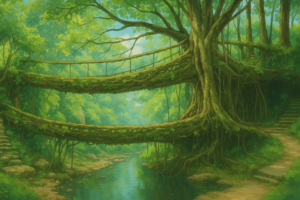 Gaining massive visibility and engagement online, the Shillong chapter also jumped on the bandwagon and here are a few illustrations of some of the iconic spots in and around Shillong, as well as some depicting Shillong in quotidien. Shillong’s dreamlike landscapes, its colours, its prominent characteristics is what has been elevated by the Ghibli-style art.
Gaining massive visibility and engagement online, the Shillong chapter also jumped on the bandwagon and here are a few illustrations of some of the iconic spots in and around Shillong, as well as some depicting Shillong in quotidien. Shillong’s dreamlike landscapes, its colours, its prominent characteristics is what has been elevated by the Ghibli-style art.
For context, Studio Ghibli is a legendary Japanese animation studio known for its breathtaking films like Spirited Away, My Neighbour Totoro, and Howl’s Moving Castle. Their unique style of hand-drawn art adds life to portraits and images of nature, their surrounding environment and characters with bright eyes, enhanced expressive features using soft colours, and scenes that almost feel like a dream. These extraordinary artworks evoke a sense of yearning and sentimentality like most of anime.
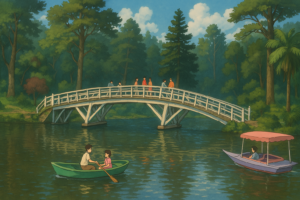 As the demand for these illustrations surged, CEO of OpenAI, Sam Altman posted on X “It’s super fun seeing people love images in ChatGPT. But our GPUs are melting. We are going to temporarily introduce some rate limits while we work on making it more efficient”. A few days later, he even urged users globally to calm down for these image generations as his employees ‘need to sleep.’
As the demand for these illustrations surged, CEO of OpenAI, Sam Altman posted on X “It’s super fun seeing people love images in ChatGPT. But our GPUs are melting. We are going to temporarily introduce some rate limits while we work on making it more efficient”. A few days later, he even urged users globally to calm down for these image generations as his employees ‘need to sleep.’
Not just regular users, noted Indian public figures also plunged into this booming trend. Sachin Tendulkar, Amitabh Bachchan, Narendra Modi, Shashi Tharoor were among the first few to share their photos on their social media.
Welcome by anime lovers and enthusiasts of social media trends, but for those belonging to the art fraternity, a number of questions on ethical concerns were raised that sparked debates on copyright and infringement of a prototype without licence.
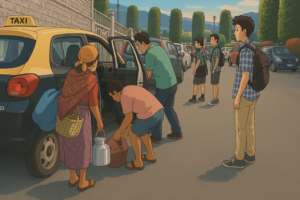 Engaging with local Illustrator and Lead Designer at Half and One (a Shillong-based space for original art, comics, cartoons and narratives), Allen B Thangkhiew shares his thoughts on this trend gaining momentum. He says, “It was nice to look at, initially. That AI could reproduce them with just a few prompts, I found it impressive. But as I kept seeing these pictures on social media, I started wondering whether these people who are using the AI to generate these images, are even aware of the source material and the original creators of the art style. The studio has been producing animated movies using the traditional style of drawing every single frame, for a very long time. The creators of the AI may have tried to pay homage to the original creators, but I don’t think the people at Studio Ghibli see it that way.”
Engaging with local Illustrator and Lead Designer at Half and One (a Shillong-based space for original art, comics, cartoons and narratives), Allen B Thangkhiew shares his thoughts on this trend gaining momentum. He says, “It was nice to look at, initially. That AI could reproduce them with just a few prompts, I found it impressive. But as I kept seeing these pictures on social media, I started wondering whether these people who are using the AI to generate these images, are even aware of the source material and the original creators of the art style. The studio has been producing animated movies using the traditional style of drawing every single frame, for a very long time. The creators of the AI may have tried to pay homage to the original creators, but I don’t think the people at Studio Ghibli see it that way.”
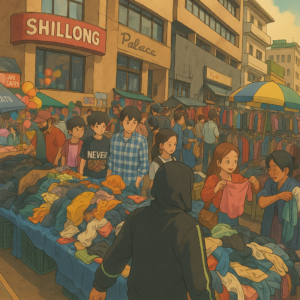 Asking him how he feels about it as an artist, Thangkhiew says, “It is shameful. As an artist, I have been honing my craft for years and have taken a lot of patience to develop my skills for a style of illustrating and creating artwork. To witness an AI program effortlessly reproduce a style that has been the result of hundreds of hours of hard work, with just a few prompts, it’s disheartening.”
Asking him how he feels about it as an artist, Thangkhiew says, “It is shameful. As an artist, I have been honing my craft for years and have taken a lot of patience to develop my skills for a style of illustrating and creating artwork. To witness an AI program effortlessly reproduce a style that has been the result of hundreds of hours of hard work, with just a few prompts, it’s disheartening.”
On his thoughts on AI and issues of copyright, Thangkhiew says, “As artists, we are going to have to adapt and evolve accordingly. How we use AI is entirely up to us, at the end of the day with its pros and cons, just like people feared the computer, and later adapted to it, so will artists to AI. When it comes to issues of copyright, I think artists are going to have to brace themselves as a lot of people are going to be using AI, whether they create artwork, videos or other forms of visual content.”
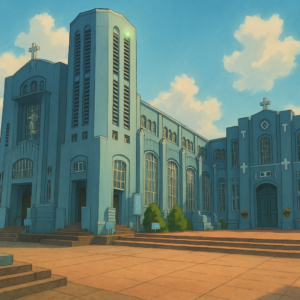 Creative Director and Writer at Half and One, Babatdor Dkhar also weighs in, “The viral nature of new advances like the one we just saw with the Ghibli-style also means that it’s not a cheat code because everyone has access to it. It’ll be interesting to see how the creative and publishing industries react to it. I predict copyright and trademark lawsuits in a number of countries because ChatGPT or Grok is using content that is created by others.”
Creative Director and Writer at Half and One, Babatdor Dkhar also weighs in, “The viral nature of new advances like the one we just saw with the Ghibli-style also means that it’s not a cheat code because everyone has access to it. It’ll be interesting to see how the creative and publishing industries react to it. I predict copyright and trademark lawsuits in a number of countries because ChatGPT or Grok is using content that is created by others.”
Does an AI generated art trend undermine talent and craftsmanship? Will this be a fleeting trend? Will this discourage creativity among budding artists? These questions will find answers in their own time. While it lasts, the Ghibli-style is a convincing portrayal of a reimagined everyday – picturesque and dreamlike.
